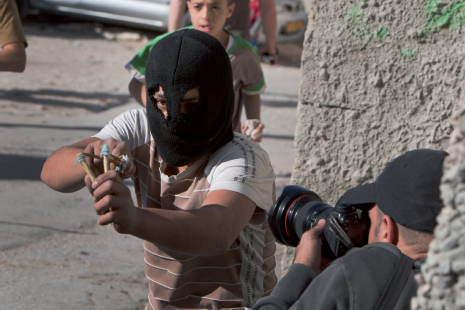Printed Page 403
CONVERGING MEDIA
Case Study

Digital Camera Journalism
One side effect of converging media is the ubiquity of digital cameras, which have become smaller and easier to use on their own and also integrated into many computers, phones, and other mobile devices. Journalism has been shaken up by the prevalence of these cameras, which represent both an opportunity and a danger to news producers and audiences alike.
Some of the thorniest professional and ethical issues surround the use of hidden cameras. Though hidden cameras as a gimmick on television have been around as long as Alan Funt’s Candid Camera (which began as the radio show Candid Microphone), today’s smaller and more versatile digital video cameras make it even easier to conduct the deceptions, invasions, and entrapments of this technique. The program To Catch a Predator, a Dateline NBC series that has worked with an online watchdog group to bust adults who contact minors on the Internet for sexual purposes, became popular by using hidden-camera techniques, but has drawn criticism (and at least one successful lawsuit) for blurring the lines between journalism, police work, and entertainment. The widespread availability of affordable digital video also means that citizens can make their own hidden-camera reports, for better or for worse. The late Andrew Breitbart’s site BigGovernment.com specialized in hidden-camera footage, like a segment shot undercover at the Association of Community Organizations for Reform Now (ACORN), purporting to show ACORN workers giving illicit advice on avoiding taxes and hiding prostitution. Though the videos did immense damage to ACORN, the BigGovernment.com reporters were criticized for editing the videos to mislead viewers.
But despite the controversy that often comes with the newfound freedom to create journalistic video, digital cameras also have provided some of the most compelling news coverage of the last decade. Footage generated by amateurs using smartphones provided the first glimpses of the devastation wrought by the 2004 tsunami in Indonesia and the standoff at Norris Hall during the 2007 Virginia Tech Massacre; in previous chapters we have explored how images gathered by smartphones and distributed by social media played key roles in the Arab Spring uprisings and the Occupy Wall Street movement. We have also considered the ethical problems of using visually compelling footage provided by terrorist organizations. As these contrasting cases suggest, digital footage—now so easy to shoot and distribute—gathered by non-journalists constitutes an ethical minefield for professional journalists. For news consumers, this material also demands a high level of critical engagement—the engagement that comes with being media literate.